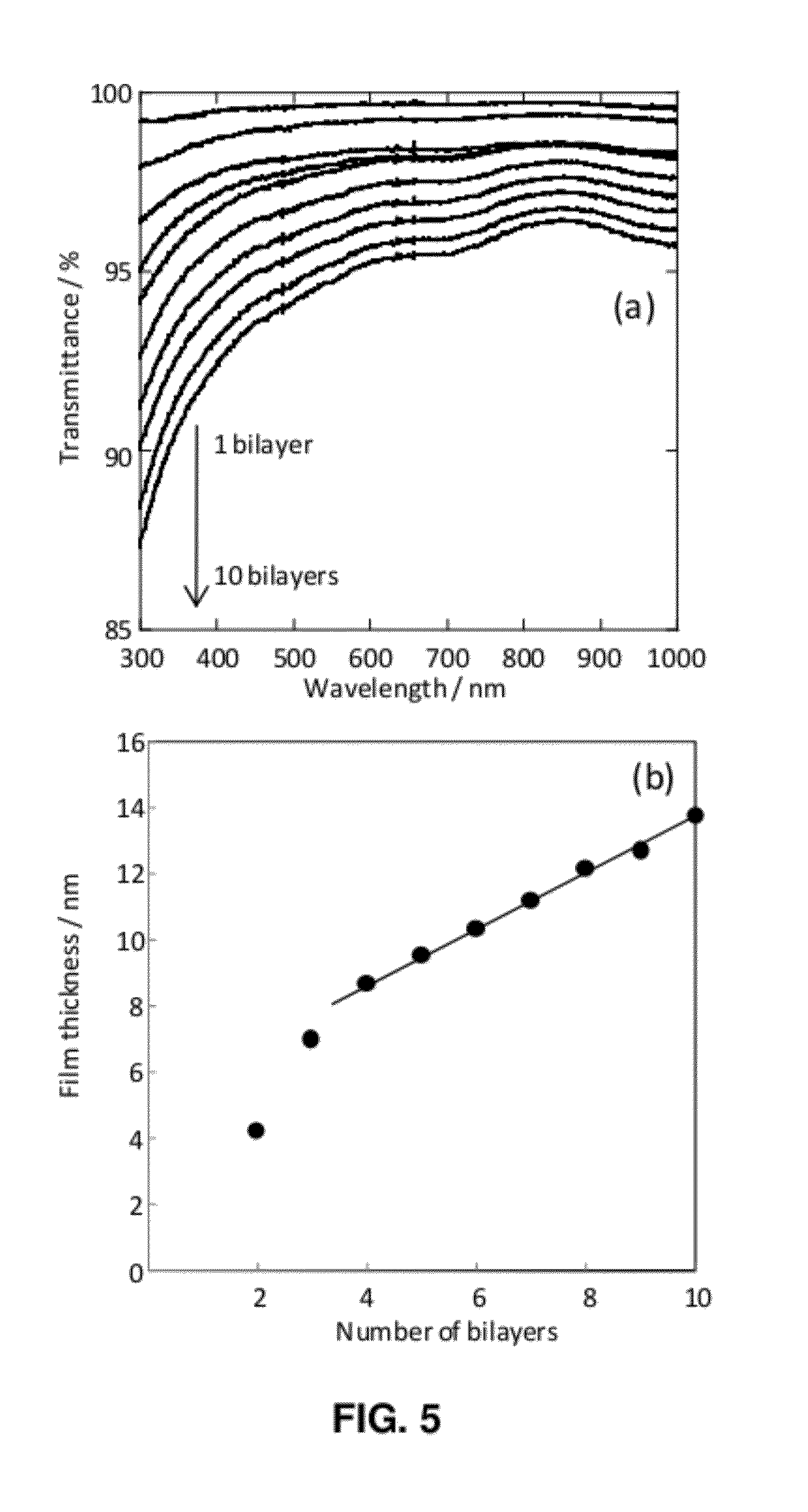Preparation of layer-by-layer materials and coatings from ionic liquids
a technology of ionic liquid and layer-by-layer materials, which is applied in the direction of pretreatment surfaces, coatings, nanotechnology, etc., can solve the problems of limiting the selection of layering materials for films and other structures, and the application of films produced using lbl processes to those polyelectrolytes soluble in aqueous or organic solvents, so as to reduce crystallinity and increase the effect of strength and moderate extensibility
- Summary
- Abstract
- Description
- Claims
- Application Information
AI Technical Summary
Benefits of technology
Problems solved by technology
Method used
Image
Examples
example 1
Preparation of LBL Films Containing Carbon Nanotubes
[0074]Materials. 1-Ethyl-3-methylimidazolium ethylsulfate ([EMIm][EtSO4]), poly(sodium-4-styrenesulfonate) (PSS) (molecular weight, 1,000,000 Da.). Poly(ethyleneimine) (PEI) (branched, molecular weight, 25,000 Da.) and poly vinyl alcohol (PVA) (80% hydrolyzed, molecular weight, 9,000 to 10,000 Da.) can be purchased from Sigma-Aldrich, (St. Louis Mo., USA) and used as received without further purification. The purified P2-Single Walled Carbon Nanotubes (P2-SWNT) (70-90% carbonaceous purity) was obtained from Carbon Solutions, Inc. (Riverside, Calif., USA) PSS, PEI and PVA can be individually dissolved in deionized water (DI water) with the concentration of 50 mg / mL. The pH of PEI solution was adjusted to 3.7 by hydrochloric acid. Single wall carbon nanotubes (SWNTs) are dispersed in PSS solution (1 mg / mL) with 1 day of mild sonication. The concentration of SWNT was adjusted to 0.5 mg / mL. Ionic liquid solutions can be prepared by the...
example 2
Methods for Preparing Cellulose Thin Films
[0084]Methods and Materials. 1-Ethyl-3-methylimidazolium acetate (EMImOAc) was purchased from Sigma-Aldrich, (St. Louis, Mo., USA) and used as received. Whatman No. 1 filter paper (98% cotton) was obtained from Fisher Scientific and ground prior to dissolution in (EMImOAc) or preparation of CellNCs. 50 mg of ground paper was dispersed in 5 mL of (EMImOAc) and the mixture was heated with stirring at 70° C. After stirred for about 2 hours, a transparent cellulose solution with a concentration of 10 mg / mL was obtained and the solution was further stirred for 24 hours at that temperature. CellNCs can be prepared according to the method as reported previously.
[0085]Cellulose films can be prepared by spin-coating of cellulose solution of (EMImOAc) onto a silicon wafer or a glass slide followed by rinsing with ethanol to coagulate cellulose film on the substrate as well as remove ionic liquid. Briefly, for fabrication of a free-standing film, 50 μL...
PUM
| Property | Measurement | Unit |
|---|---|---|
| Electric charge | aaaaa | aaaaa |
| Solubility (mass) | aaaaa | aaaaa |
| Affinity | aaaaa | aaaaa |
Abstract
Description
Claims
Application Information
 Login to View More
Login to View More - R&D
- Intellectual Property
- Life Sciences
- Materials
- Tech Scout
- Unparalleled Data Quality
- Higher Quality Content
- 60% Fewer Hallucinations
Browse by: Latest US Patents, China's latest patents, Technical Efficacy Thesaurus, Application Domain, Technology Topic, Popular Technical Reports.
© 2025 PatSnap. All rights reserved.Legal|Privacy policy|Modern Slavery Act Transparency Statement|Sitemap|About US| Contact US: help@patsnap.com



